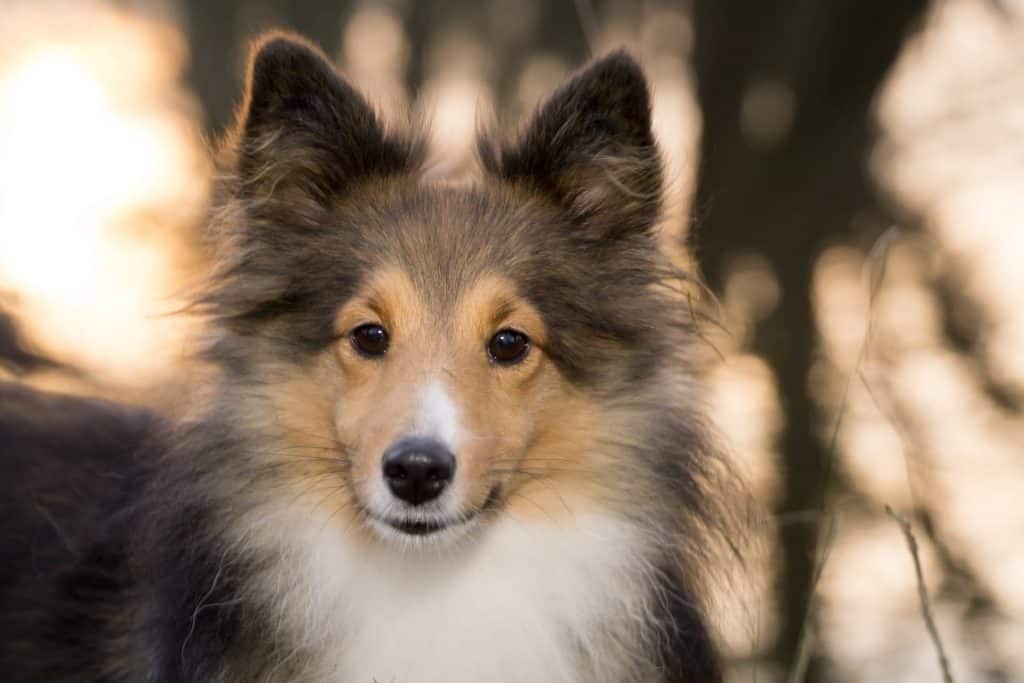Shetland Sheepdog, better known as Shelties, are smaller sized breeding dogs from the Shetland Islands of Scotland.
They are small, loyal and active with looks resembling similarity to Rough Collies.
Adapted to living in harsh conditions, this herding dog breed was originally called Shetland Collie due to their matching appearance with Collie breed.
Due to the scarcity of food in their original place, they are diminutive in size than their mainland cousin breeds.
They are very attached to their owners, often following them around the house and can get separation anxiety when left alone. They are made by crossbreeding many different breeds like Border Collies, King Charles Spaniel, and Pomeranian, etc. They weren’t discovered until the 20th century to the isolation of their origin place.
Some say that due to breeding them for different qualities the UK breed dogs are a little different the American ones. Shetland Sheepdog puppies have floppy ears, big eyes, and soft fur that makes adorable along with a curious nature.
They are born in a litter of 4-6 at a time and should only be adopted when they are 8 weeks old.
During their growing up years, they experience growth in both height and weight and are fully grown by 10-16 months. They should be house trained from a young age along with obedience and socialization classes to make them well-rounded.
Adults are small in appearance with a thick rough-haired coat with a short and sturdy body. They have a smooth appearance smooth face features like a long muzzle and wide apart eyes.
They are agile and energetic with a strong build that makes them look like alert watchdogs. They are very loyal to their owners and intelligent like many herding breeds as they are quick to understand and learn commands.
Table of Contents
Shetland Sheepdog Pictures
Quick Facts

Avg. Weight: 15-25 pounds
Avg. Height: 13-15 inches
Life Expectancy: 12-15 years
Dog Group: Herding Dogs
Colors: Sable, Mahogany Sable, Shaded Sable, Tri-Colored, Bi-Black, Bi-Blue, Blue Merle, Bi Blue Merle, Sable Merle, Color Headed White, Double Merle
Other Names: Sheltie
At A Glance
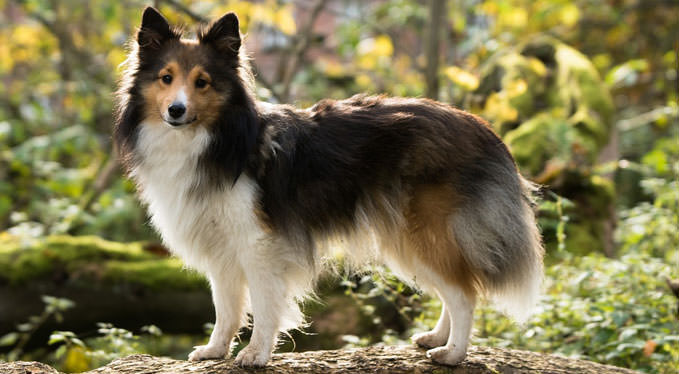
- Size (1/5)
They measure 13 to 16 inches in their full-grown state.
They are small with a proportional body without anybody part appearing big.
- Affection Level (5/5)
The dogs of this breed are known to be affectionate to all.
Mostly they are attached to their owners and to other family pets.
They are very devoted and loving in nature which adds to their charm.
- Apartment Friendly (2/5)
They aren’t recommended for apartment living due to their need for physical space and playing area.
They tend to bark a lot at anything uncommon due to herding instincts.
Also, they need exercise space to complete their daily physical exertions which are restricted while living in apartments.
They need to be trained to adjust living there with everyday outside activities being necessary.
- Cold Weather Tolerability (4/5)
They have a double coat of rough straight hair that protects it from harsh cold weather.
The outer long hair coat blocks the cold air and repels the moisture from the air.
The inner soft layer of hair keeps the warmth close to the body by acting as an insulating layer.
Their place of origin is known for its hard and frigid weather thus they have adapted to live in it.
- Hot Weather Tolerability (3/5)
For summer Shetland Sheepdogs shed their undercoat thereby helping them cool their bodies.
Trimming their outer coat and brushing them regularly to remove hair thus increasing the circulation of air helps them a lot.
They can overheat so make sure they have cool water and shade when going out.
Also, avoid walking them on heat-retaining surfaces as they can burn their feet.
- Barking Tendencies (2/5)
They can bark sometimes to alert the owners of a threat or strangers.
Due to their herding background, they have the in-built instinct to be suspicious of any unknown thing.
Most of the dogs can be trained to lower the frequency of their barking.
Most of their barking is of watchdog nature and early socialization and exposure to outside can help to reduce it.
- Cat-Friendly (4/5)
They are among the dog breeds that get along with cats and are very good playmates.
If they are raised together from a young age they learn how to behave with them.
Shelties learn fast and a playful, curious cat is a great stay at home companion for them.
They get well especially if the cat shows the authority on being herd by them.
- Dog-Friendly (4/5)
They have a preference for their own breed as playmates over other breeds.
They need to socialize at an early age and exposed to other dogs to develop their social nature.
They are friendly and spending time with other dogs if they have been socialized by their owners.
- Exercise Needs (4/5)
They need a moderate amount of exercise daily to stay fit.
Owners should make sure they get at least 45 minutes of exercise every day.
Due to their working background, they need regular physical and mental stimulation.
- Grooming Needs (3/5)
They are heavy shedders with them requiring brushing twice a week.
Their double coat needs a lot of care to maintain it by removing dead hair and dirt.
Proper care of their coat will prevent fleas and skin infections from happening.
Nails should be trimmed and dental hygiene should also be maintained for a clean and healthy dog.
- Playfulness (4/5)
They are always up for an outside game due to their inexhaustible energy.
They aren’t very active indoors so the owners have to take them outside for walks or games.
They are good in agility sports like flyball which acts as both mental as well as physical exercise for them.
- Trainability (5/5)
One quality of Sheltie known everywhere is their obedience in obeying their master’s commands.
They are very easy to train and learn new commands and actions quite quickly.
Due to their ease of trainability long with intelligence, they also serve as medical support and therapy dogs.
They are also popular in dog competitions and have proven to be quite successful there.
- Intelligence (5/5)
According to a leading study on dogs, they are the sixth most intelligent breed.
They can easily grasp new things after being repeated a few numbers of times.
Their intelligence is also one factor in their ease of trainability and high obedience level.
They have a curious and exploring nature that should be encouraged to help them socialize.
- Mouthiness (1/5)
They only chew or bite stuff when they are going through the teething phase during the growing phase.
Otherwise, they are gentle when they grow up but sometimes they can nib while herding.
- Price Group
They cost on an average between $800 and $1000 if they are purebred.
Many people opt for Sheltie rescue and adoption centers as they cost less than buying from a breeder.
For show dogs, the color of their coat is also important hence favorable qualities result in higher costs.
About Shetland Sheepdogs
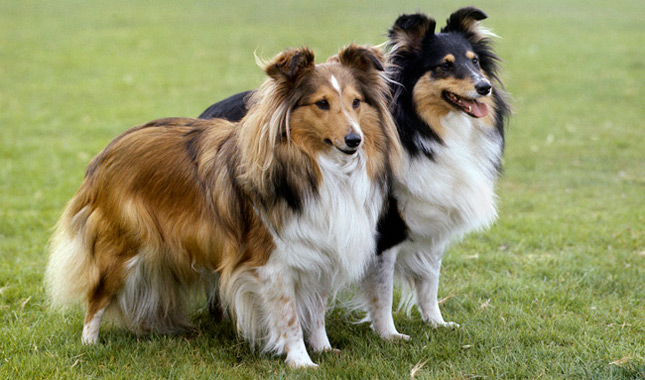
They are known as miniature Collies due to their striking resemblance to Rough Collies.
Small and active they were the herding dogs back in their place of origin.
They have a double coat that acts as their protection against cold weather and salty air of the islands.
They have a long smooth muzzle with clear apart eyes giving them alert expression.
The hair on the face is smooth while the other parts of the body are covered in rough hair on the outside and smooth small hair on the inside.
They are said to be very successful in obedience training and in dog competitions.
They have intelligence, easy trainability with gentle and non-aggressive temperament.
They are a good choice for family dogs as well as serve in other fields like medical support and therapy dogs.
Where Shetland Sheepdogs Came From?
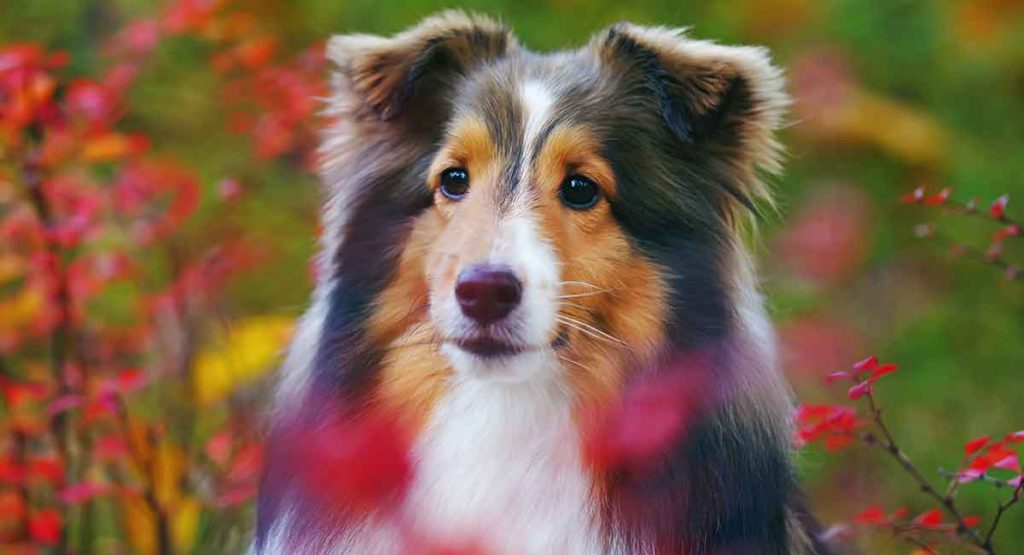
Their place of origin is the Shetland Islands of Scotland, near the end of the Arctic Circle.
They are the descendants of the Scandinavian herding dogs that were imported to the islands in the 1700s and bred with the Coolie breed dogs.
On being introduced to England, they were bred with many different breeds like Icelandic Sheepdog, Rough Collie, etc.
The original dogs were also bred with cute dogs like Pomeranian and King Charles Spaniel to attract people with their refined looks as for family pets.
Due to indiscriminate crossbreeding, the original herding dog breed has disappeared.
It was a hot topic in the 20th century among the breeders on how the breed should look.
The breed came in America when 50 dogs of this breed were imported from England.
Since then there has been a slight difference in the looks in the dogs from over the Atlantic.
They were recognized in 1911 by AKC with a Shetland Sheepdog named Lord Scott.
The breed is now found everywhere but is a rarity in their place of origin having being replaced by Border Coolies.
Size
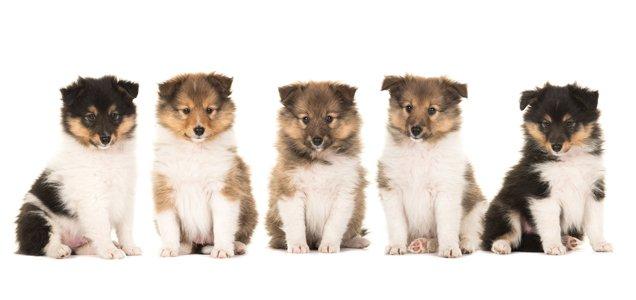
They are small in size with being the smallest of the herding dog group.
They are 13-16 inches tall on average though some dogs can grow taller than that.
The original dogs were bred with miniature-sized dogs like Pomeranian and King Charles Spaniel to get smaller in size.
Another reason for them being smaller in size than other Collies is the low availability of food in the Shetland Islands.
It is said that Coolies who were favorable herding dogs couldn’t survive in the harsh climate of the islands.
Thus necessitating the need for smaller herding dogs that needed less food and less care against cold and hard weather.
Trainability
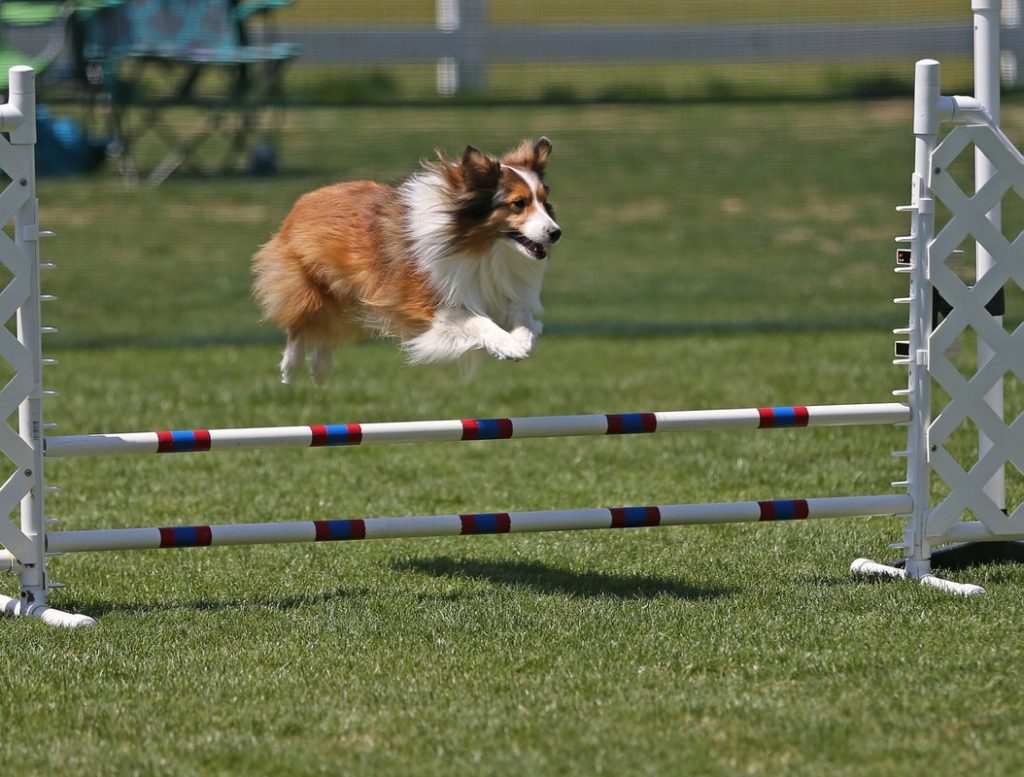
They are highly trainable with great obedience seen in them to their owners or trainers.
They can easily be taught new commands and actions due to their high intelligence.
High obedience and intelligence make them a good choice for dog competitions.
They have shown good performances in agility, track events, and sheepdog competitions.
They are sensitive to their owner’s nature and negative actions can cause them to act badly.
Grooming

They are heavy shedders with their double coat of hair ensuring year-long hair sticking on couch and carpets.
They do heavy shedding twice a year to adapt well to the seasons.
They need brushing two times a week to remove dead hair, resolve matting and tangling of hair.
They also need brushing three days to prevent dental issues from cropping up along with nails trimming.
Common Diseases

They are a healthy breed but Shelties are prone to medical issues which are covered below.
TARGETING THE BONES
- Hip Dysplasia:
It is an inherited disease that causes the joints to develop improperly causing erratic movements and pain.
There are stiff and painful movements seen when the dog is trying to move.
Lameness and arthritis and sometimes paralysis can also happen to the affected dog.
Medications in milder cases and surgery in severe cases are used to correct and relieve the pain of the dog.
TARGETING THE SKIN
- Dermatomyositis:
It is the skin conditions where skin lesions are caused by the inflammations in the body.
It is genetically passed and the chances of getting affected are there if any one of the parents has it.
In this, there is a defect in the immune system of the dog with skin lesions appearing on head, ears and front legs.
Extensive hair loss and scarring on body parts are also seen as signs of this condition.
In case such signs are seen on dogs they should be checked by a specialist but there is no particular test for this.
Medications are used to alleviate the symptoms and provide relief to them.
TARGETING THE EYES
- Collie Eye Anomaly:
It is an inherited medical condition in which changes and abnormalities are observed in the eye.
Signs are choroidal hypoplasia (abnormal development of choroids), coloboma (defect in the optic disc), staphyloma (thinning of the sclera), and retinal detachment.
It occurs normally around the age of two years and can also lead to blindness in the worst cases.
There is no currently available treatment and eye examination is advised before adopting or breeding the dogs.
TARGETING THE BODY
- Hypothyroidism:
In this medical condition, their bodies don’t make a normal amount of thyroid hormone.
Weight gain, thinning of their coat, dry skin, slow heart rate, and cold sensitivity are some signs of this.
Medications on a daily basis usually keep this condition under control prescribed by the vet.
- Von Willebrand’s Disease:
It’s a blood disorder where the clotting properties of the blood are reduced due to the deficiency in antigen responsible.
It results in excessive bleeding after an injury, nosebleeds, bleeding gums or internal bleeding.
Most of the dogs lead normal lives but extra precautions have to be taken.
- Hemorrhagic Gastroenteritis:
It is a serious disease whose signs are bloody diarrhea, vomiting, and severe dehydration.
It needs a considerable amount of treatment for the dogs as it has proven to be fatal in cases where care wasn’t promptly given.
On showing any such signs they should be checked by the vet as these are also the signs of gastrointestinal disease.
Feeding
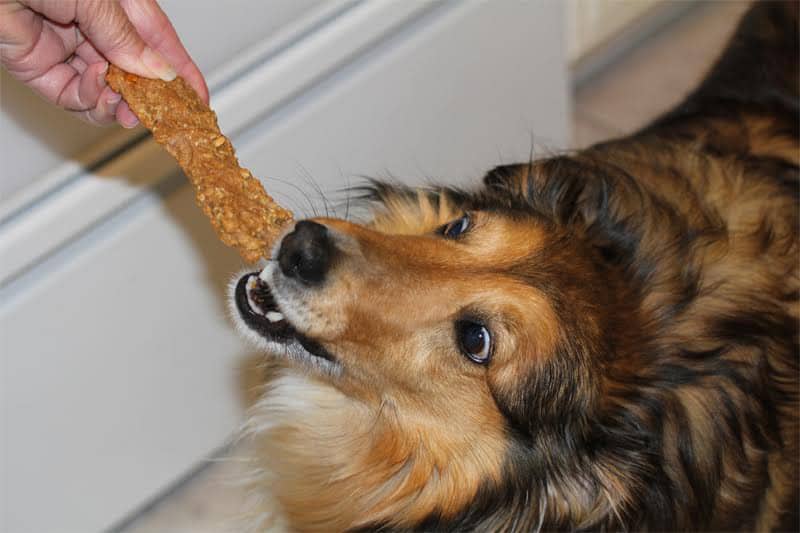
Adults need 2 cups of high quality of dog food divided equally throughout the whole day.
Puppies need more frequent feeding due to their growing up age though their meals should also be monitored.
They need a high calorie and protein diet which also contains carbohydrates and other essential nutrients.
Before feeding check the food for common allergens, artificial flavoring, preservatives, etc.
They should not be fed more than their capacity as they can grow obese as seen in many small dog breeds.
Every dog is different and before feeding them a new food diet it is better to introduce it slowly.
Suggested: Senior Dog Food
Vaccination And Care
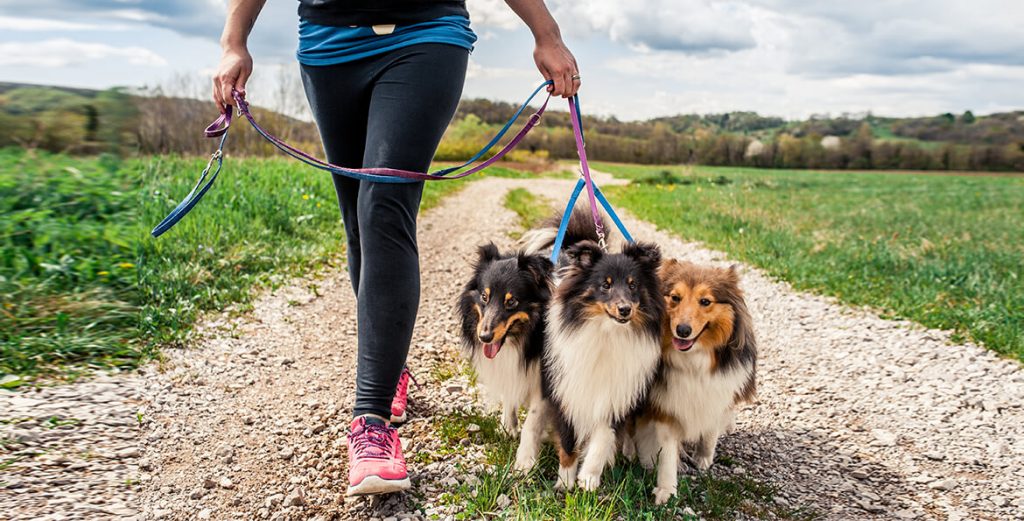
Puppies’ vaccination schedule should be as given below:
| Age | Vaccinations |
| 6-8 weeks | DHPP, Bordetella, Measles |
| 8-12 weeks | DHPP, Coronavirus, Leptospirosis, Bordetella, Lyme disease |
| 12-16 weeks | Rabies, DHPP, Coronavirus, Leptospirosis, Lyme disease |
For adults the vaccines should be administered as per their schedule:
| Time | Vaccinations |
| 1-3 years | DHPP |
| 1-3 years | Rabies |
| Annually | Coronavirus, Bordetella, Leptospirosis, Lyme disease |
DHLP-P: Distemper, Hepatitis, Leptospirosis, Parvovirus, Parainfluenza
Owners should maintain a chart to remember all the vaccine dates.
Suggested: Beginner’s Guide To Dog Vaccination
Monthly Expense Estimation
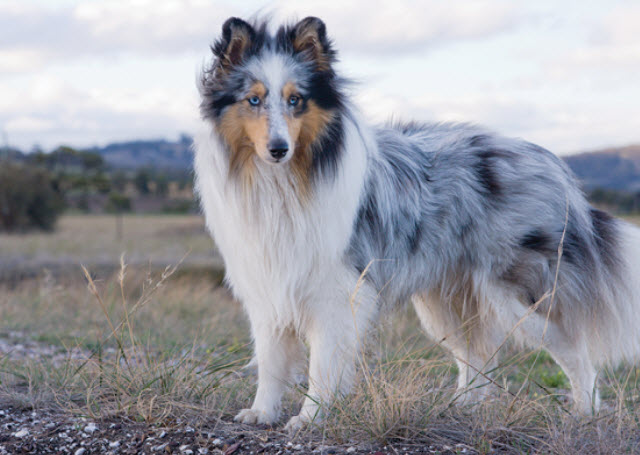
The expense of taking care of any dog is higher than the costs for the next subsequent years.
Shelties needs are few, high-quality dog food, pet supplies, and some toys are all that make them content.
Owners should have a vet and medical costs also included in their budget as many opt for pet insurance.
Grooming them also adds to the bill as their double coat needs constant care to have the shine.
Taking care of them cost around $100-$150 a month taking everything into the account.
Behavior With
Children
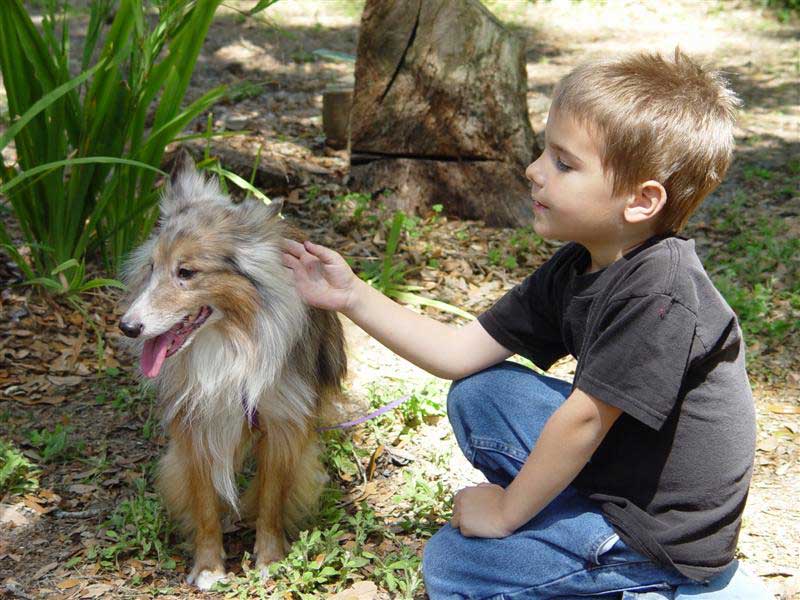
They are a very child-friendly breed that is known for their gentleness to small children.
They love to play and energetic thus ideal playing partners for small children who also have a boundless supply of energy.
They are also loyal and devoted and thus keep a watch on the kids making them good watchdogs.
They also easily understand the game and thus kids would love the company of a Sheltie.
Though they sometimes are known to herd kids while playing and should be trained not to do so.
Dogs

They are friendly to dogs of other breeds if they are properly trained to be social.
They are of reserved nature and need exposure to other dogs while growing up.
If the dog isn’t aggressive or intimidating they bond well with them and are happy in their company.
They, though, have a preference for their own breed as they identify others as family members.
Cats

They bond well with their feline fellow house pets and don’t view each other as a nuisance.
Cats and Shelties should be introduced at a young age to be accommodating to each other’s presence.
They should be trained to avoid herding the cats as cats don’t tolerate this kind of behavior and might attack them.
Overview

Shelties are small and active herding dogs that originated from the northern islands of Scotland.
Their name is the ode to their place of origin, Shetland Islands.
Their shiny and silky double coat acts as their protection against cold weather as well as making them attractive as family pets
They have a long smooth muzzle with clear apart eyes, upright ears, and a well proportionate body with sturdy features.
They are successful in obedience training and in dog competitions and are ranked sixth by experts according to their intelligence.
They are intelligent, easy trainable with a gentle temperament that makes them a good choice for families and novices.
Something Fun
In a Canadian Children series, Mickey’s Farm, the main character Mickey is played by a Sheltie.
Hope you enjoyed reading about this adorable and intelligent dog from Scotland.
In case you have anything to add please free to write below.
Happy petting to you!






